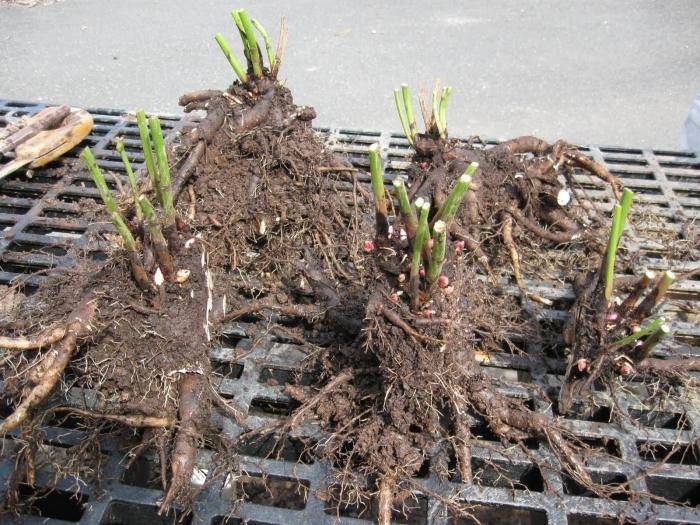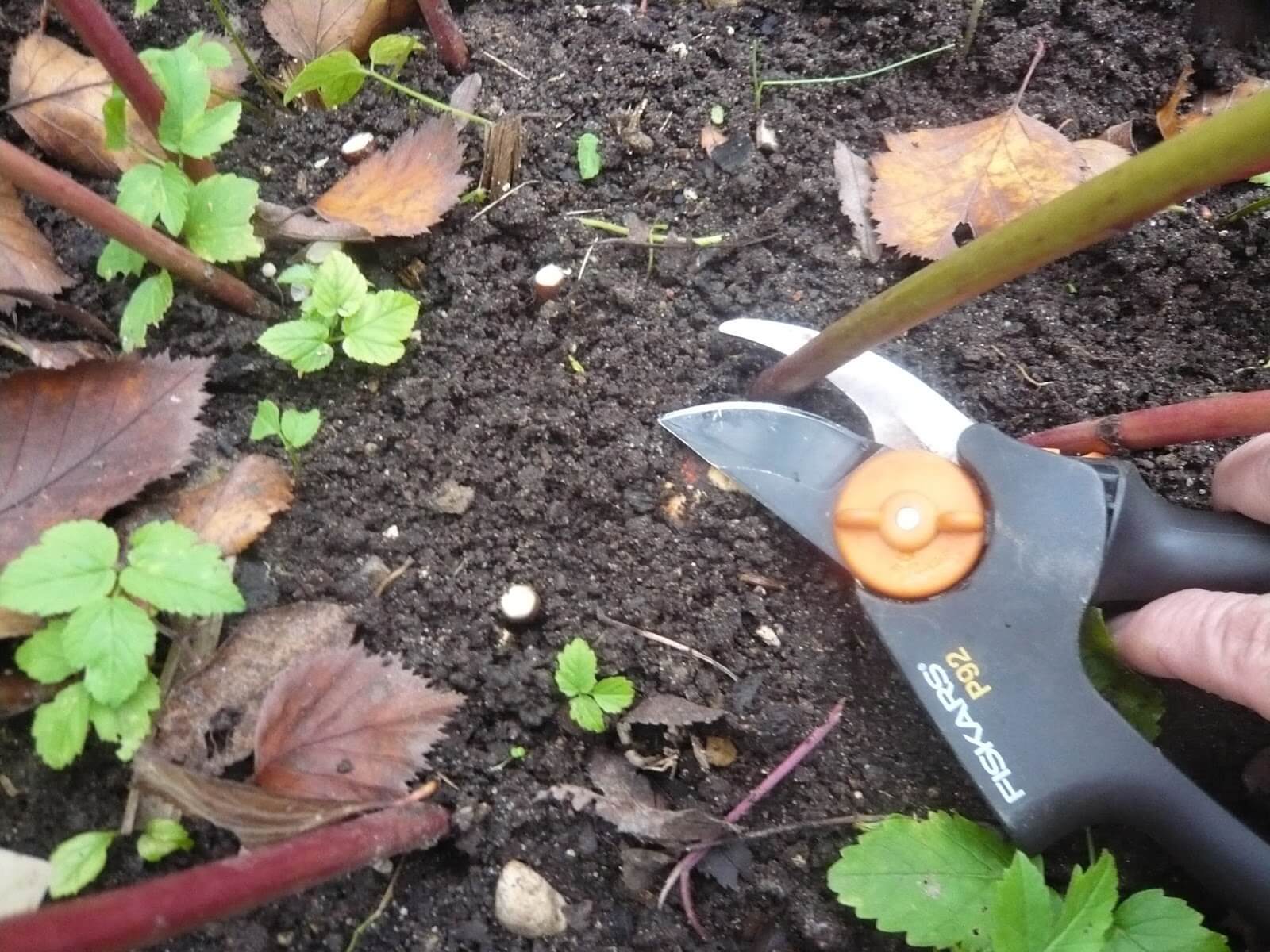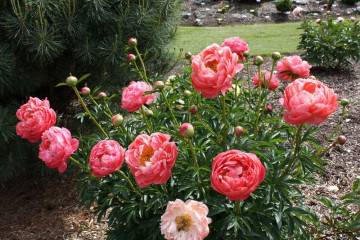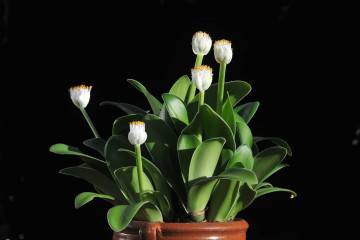Peony Karl Rosenfeld (Paeonia Karl Rosenfield) - planting and caring for a flower
Content:
Peony Karl Rosenfeld (paeonia Karl Rosenfield) has taken a firm place in the flower gardens of lovers. Especially attractive is the opportunity to admire a beautiful plant for many decades. Every year, the perennial becomes more voluminous, and the flowering is richer, while it requires a minimum of effort in care.
Peony Karl Rosenfeld - what is this variety
The lactic-flowered (Lactiflora) crop species, Karl Rosenfield Peony (Karl Rosenfeld), was obtained by breeders in China. The beautiful flower is considered a national treasure of the Republic. The variety is tall and voluminous with a strong root system and strong stems.
Brief description and characteristics
Of all the varieties and varieties, Karl Rosenfeld objectively takes the lead in beauty.
Carl Rosenfeld milk-flowered peony is a herbaceous plant. Therefore, every autumn, the aboveground part completely dies out and grows back in the next season.
Large double buds (there are also semi-double). The diameter of the flower reaches 20 cm. Dark shades (wine-red, lilac) are more common, but there are shades of red and even white.
This peony is distinguished by its remarkable frost resistance. It grows everywhere except in permafrost regions. Juicy, large root tubers tolerate cold well.
The varietal characteristics of the peony appear in the third season after planting (transplanting).
Advantages and disadvantages of the variety
The advantages of the variety are:
- winter hardiness;
- drought resistance;
- disease and pest resistance;
- large buds, lush bloom;
- aroma;
- undemanding to the composition of the soil.
The disadvantages include the high cost of seedlings and the inability to obtain a varietal plant when propagated by seeds.
Use in landscape design
The appearance and good characteristics make Rosenfield, as the variety is also called in Russia, desirable not only in summer cottages, but also in park areas of the city. The luxurious bush is beautiful in bloom and without buds. The rich foliage can serve as a backdrop for a medium, low flowering plant.
Growing a flower
The rules for planting and growing crops are simple. It grows well in almost any soil. In open ground, they are often planted with root cuttings.
Planting by root cuttings
Step-by-step process of planting a divider:
- An adult bush over 8 years old is carefully dug up.
- The rhizome is thoroughly washed with water.
- It is divided into parts with up to 3-5 living buds and 3 adventitious roots.
- The resulting material is disinfected in a pink solution of potassium permanganate for 30 minutes.
- The sections are processed with crushed charcoal or cinnamon powder.
- Delenki are laid out for drying for 2-3 days.
- Plants are planted in ready-made holes.
What time is the boarding
You can plant or transplant Karl Rosenfeld in spring and autumn, but it is preferable to do this in early autumn. Such a bush will have time to take root well before winter and will safely survive the cold season.
Seat selection
It is necessary to plant a bush taking into account its future dimensions. It has been growing in one place for several decades. The root system grows, more nutrition is required. For this reason, there should not be tall, large plants next to it that are pulling off nutrients. Moreover, the variety is very light-requiring.
The peony needs abundant watering, but not stagnant water. A close occurrence of groundwater is also excluded.
A powerful bush easily copes with a draft, but it is better to protect it from strong winds.
How to prepare the soil and flower for planting
The culture grows well on clay, loamy soils. Sandy soil is also suitable, but without the addition of nutrients and fertilizing, flowering will not be very abundant. The buds will also be smaller. Therefore, it is recommended to dilute the sand with sod soil and add organic matter (humus, compost).
Planting procedure step by step
To get a healthy bush, you need to follow the planting rules.
The procedure looks like this:
- A hole is dug 0.5 by 0.5 m.
- Humus and a glass of superphosphate are poured to the bottom.
- A glass of ash is added.
- The composition is mixed.
- Sod land is poured up to the middle of the pit.
- A seedling is placed in the center.
- Garden soil is poured to the surface of the earth, easily compacted.
- The plant is watered, sprinkled with mulch.
Planting with seeds (for breeding)
Seed propagation is a very long, troublesome process. This method is mainly used by breeders. Gardeners are not satisfied with the long process from sowing to flowering. The first flowers will appear only in the sixth season. At the same time, there is no guarantee of preservation of varietal qualities.
Plant care
Crop care is simple. It consists of watering, loosening, fertilizing, pruning.
With a well-chosen location, the peony will delight you with lush flowering in 2-3 years.
Watering and feeding
Watering should be infrequent, but abundant. Water for watering one bush will require 1.5-2 buckets at a time. In dry weather, the frequency is 2 times a week.
Fertilizers should be applied from the third season. In the same period, you need to wait for flowering. Feeding with nitrogen and potassium is carried out before the appearance of the buds.
Mulching and loosening
Gardeners recommend mulching the root zone of the peony. As mulch, you can use:
- peat;
- humus;
- fallen leaves;
- sawdust.
The bulk layer will help to retain moisture, it will be an additional top dressing.
For good aeration of the root system, it is recommended to loosen the soil around the bush. Weeds will be weeded out at the same time.
Preventive treatment
For prevention, it is recommended to process seedlings before planting. Soaking in a solution of manganese or copper sulfate can rid the plant of pathogens and pests.
Peony Blossom Karl Rosenfield
The Karl Rosenfeld variety is distinguished by its buds. Description of colors:
- there are semi-double and terry;
- the bud itself is voluminous, dense;
- the color of the petals is deep ruby or lilac. You can find bushes with red, pink, white flowers;
- petals are large, thin with wavy edges;
- the aroma of flowers is sweet, delicate.
The flower stalks of the bush are strong, high, so even such heavy buds do not incline them to the ground. Plant supports are not required.
The variety of culture is medium late. Long-lasting flowering begins in June.
A period of activity and rest
The peony wakes up with the onset of warm days in mid-April. The herbaceous bush does not lose its attractiveness until the very frost. From November to March, the activity of the bush slows down, but does not stop.
Care during and after flowering
From the beginning of the formation of buds, it is advisable to feed the peony. Nitrogen and potassium will be helpful. During the flowering period, regular watering, weeding, and loosening are shown.
After flowering, watering continues. You no longer need to fertilize. The faded buds should be cut off, but the stems should be left for a month to form flower buds for the next season.
What to do if the Rosenfeld peony does not bloom
The culture enters flowering 2-3 years after planting. If the flowers did not appear in the fourth season, then something does not suit the peony. There may be such reasons:
- lack of illumination;
- excess moisture;
- very thin soil;
- pests and diseases.
The situation can be corrected by eliminating the causes (transplant, get rid of pests and diseases). But you need to keep in mind that after transplanting, flowering will come again only after 2-3 years.
Peonies after flowering
After flowering, peonies are prepared for transplantation, wintering. At the same time, the care procedures do not stop.
Transfer
With the end of the period of flowering and ripening of the buds, that is, at the end of August, the peony can be transplanted or transplanted.
Pruning
Towards the end of autumn (late September-early October), the aerial part of the plant is cut almost flush with the ground.
Preparing for winter
In Central Russia, adult peony bushes Karl Rosenfeld do not need shelter. Young plants under 3 years old are recommended to be sprinkled with mulch (peat, sawdust, humus), covered with spruce branches.
Diseases, pests and ways to control them
The most important enemies of the variety are ants. They suck the sweet nectar from the buds, eat the petals. In addition, they are carriers of pathogenic bacteria. In the fight against them, special repellents will help.
Improper watering and thickening of flower beds can lead to various rot (gray, root) and spots (cladosporium, septoria). Constant monitoring and prevention are required.
If you follow all the simple rules of care, the Karl Rosenfeld variety will become an adornment of any garden or city park.



















